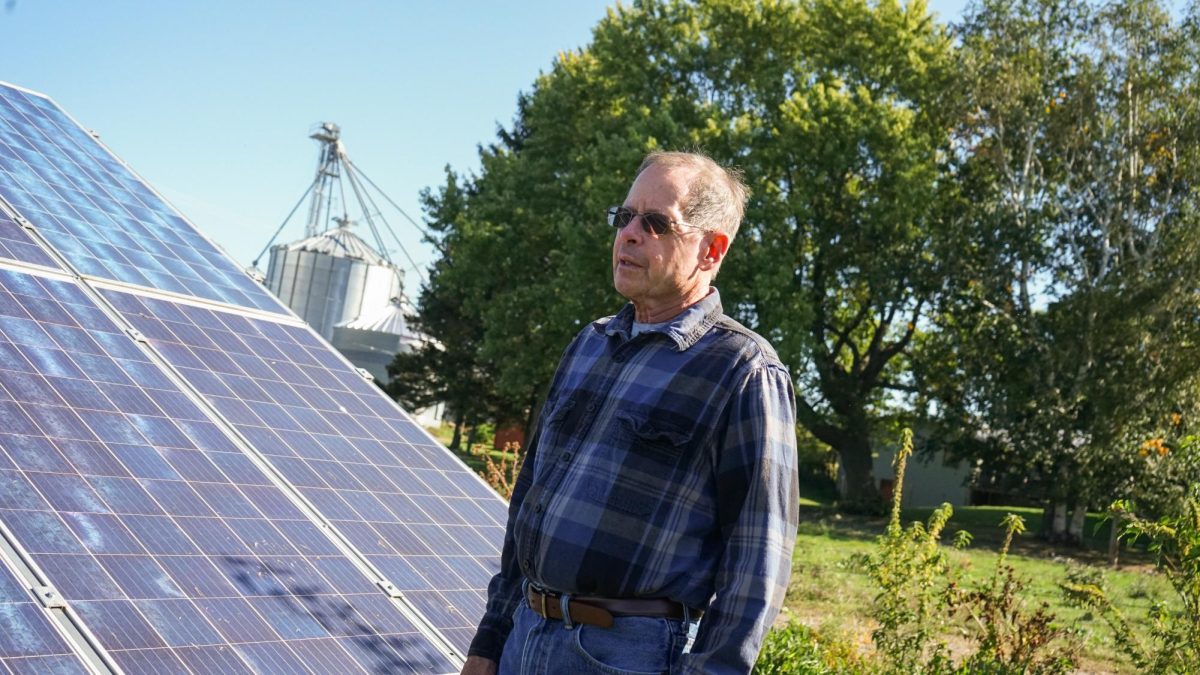The solar farm, which was completed in August, spans over 11 acres of land and supplies 1 percent of Cornell’s energy consumption.
“Solar energy is, by far, the most abundant sustainable energy resource,” Tobias Hanrath, professor of chemical and biomolecular engineering and a faculty fellow at Cornell’s Atkinson Center for a Sustainable Future, explained. “There is enough solar energy incident on Earth in one hour to power the entire planet for one year.”
Since becoming operational, the solar farm has not had any blackouts.
“Things are going great, we’ve had no issues with anything from a functional standpoint,” Sarah Zemanick, sustainability management specialist at Cornell, said. “All of the verification and witness testing with the utility went smoothly and everything is operating as expected.”
The solar farm is made up of nearly 7,000 photovoltaic modules with a total capacity to produce about two megawatts of electricity, Hanrath explained. That’s roughly the equivalent of the electricity needed to power 320 homes.
Cornell did not have to provide any of the $4 million needed to complete the project. The funds became available in 2012 through NYSERDA, along with a partnership with Distributed Sun and private investors.
“The problem [with solar energy] is that it is relatively dilute, at best 1000 W/m2, and the direct conversion of sunlight into electricity is only moderately efficient,” Hanrath said. “Cost used to be a significant drawback, but the cost of producing photovoltaics has dropped dramatically over the last five years to that in many places in the US, the levelized cost of electricity from photovoltaics is on par with the grid electricity price.”
The solar farm was built as a part of Cornell’s Climate Action Plan, which aims to reduce the greenhouse gases emitted from the university as well as creating new technology for sustainability.
“Our climate action plan is to get to carbon neutrality by 2050 and there’s a big push right now actually to speed up that plan to 2035,” said Anna Come, the Student Sustainability Coordinator at Cornell.
While the solar farm is in alignment with Cornell’s sustainable efforts, Aubree Keurajian, a science of natural and environmental systems major as well as the co-president of KyotoNOW! at Cornell, said that there is still more that the university can do to become more environmentally conscious.
“I hope that within the next few years we will be able to successfully encourage Cornell to recognize that environmental issues are about more than preserving our ability to use resources,” Keurajian said. “They are about supporting justice and respecting the other organisms with whom we share this planet.”
The solar farm will also serve as an educational tool for the Ithaca community.
“It also helps to support our academic mission,” Zemanick said. “Our developer donated 10 panels and a separate inverter that is accessible for faculty, students and school tours, along with other interested groups in the area, for hands-on research as well as making the data from the entire array available for analysis and educational purposes.”
Zemanick hopes that the solar farm will not only continue to operate smoothly and as expected, but that it will remain a source of clean energy for the university over the next 30 years.






